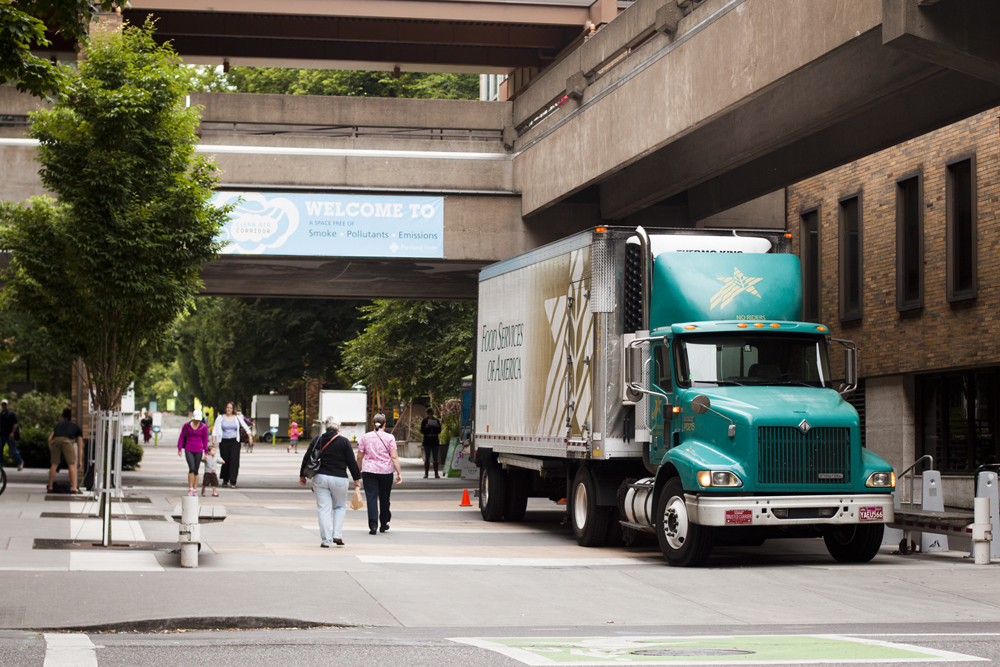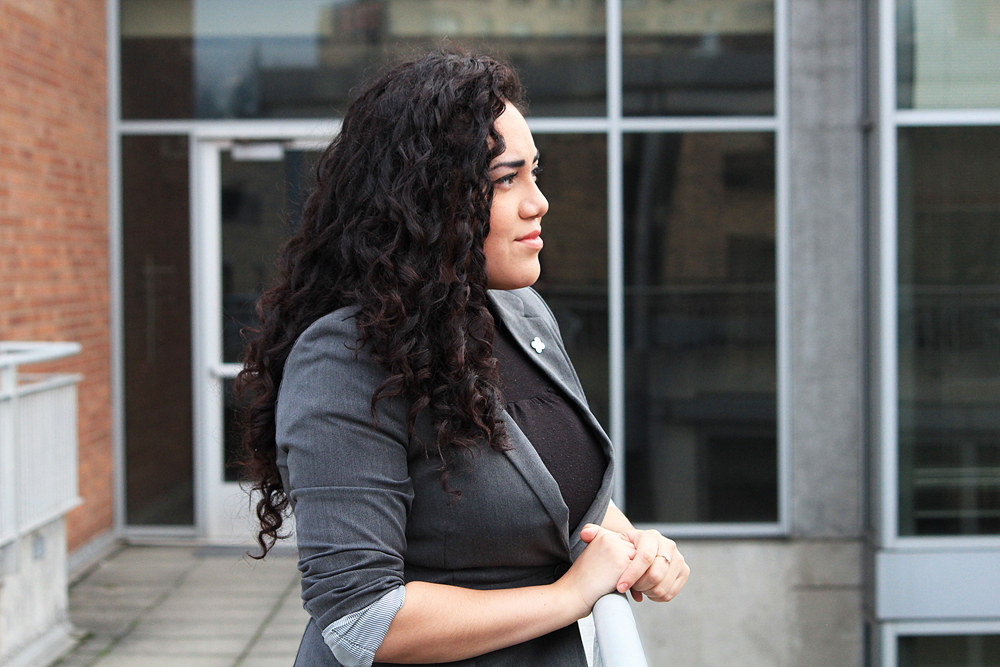The Clean Air Corridor, a smoke and exhaust-free area stretching from the north end of Lincoln Hall to the south end of Shattuck Hall, has been touted as a success by the Portland State authorities behind the policy and its enforcement. Following in the footsteps of other Oregon universities, over the next two years PSU will implement the Fresh Air Campus Challenge by expanding the smoking ban to the entire campus.
However, some have accused the CAC—and smoking bans in general—of being ineffective when it comes to actually getting smokers to quit. Others express frustration at the CAC’s goal to create a “pollution-free zone” just a stone’s throw from two lanes of traffic on Broadway Ave.
“The Clean Air Corridor is very much a PR move, more than anything else,” said student Romain Bonilla of Students for a Sensible Drug Policy. “It will not solve the problem—statistics from other campuses show that bans are not even proven to reduce cigarette use.”
Bonilla asserts that the CAC has simply displaced smokers to equally undesirable locations.
“What we see is that it pushes smokers to use other areas, and not necessarily better ones. After the implementation of the CAC, smokers began to gather right next to the sign at the entrance to the Corridor.” Other smokers, unsure of an acceptable place to have a cigarette, hide in the bushes and hastily put out their butts on the ground, Bonilla said.
For this reason, Students for a Sensible Drug Policy advocates the use of designated smoking areas on campus. “Designated areas would redirect smokers towards areas that are convenient for everyone, both smokers and non-smokers,” Bonilla said.
Bonilla explained that a simple structure offering shelter from the rain would entice smokers to use the designated area and dispose of their ash and butts in the provided receptacles, reducing cigarette butt litter. In fact, there used to be such a structure between Smith Memorial Student Union and Cramer Hall before the implementation of the Clean Air Corridor. It was successful but its location generated complaints, according to Campus Recreation Center director Alex Accetta, one of the CAC’s main advocates.
Accetta said that tearing down the existing smoking shelter had unforeseen results.
“Unintended consequences include the library noticing an uptake in people smoking under their [patio] shelter, although perhaps this has changed,” he said.
Tom Bielavitz, an assistant librarian, says this remains the case. “I’d say it’s definitely true and it continues to be true,” he said. “We support the CAC, but it does seem to push smokers into other places, and one of those places is the covered area of the library porch.”
In defense of the CAC, Accetta cited receiving a large number of emails of support from students who appreciate the initiative.
“When you talk to individuals who have asthma, lung problems or heart issues, they are able to move more freely and that makes it worth it,” he said. Previous Vanguard reporting on the CAC confirmed this sentiment and the students interviewed specifically mentioned asthma and delivering their kids to daycare as reasons they were glad for a smoke-free passage in the heart of campus.
Accetta is enthusiastic about expanding the smoking ban to the entire campus. The Fresh Air Campus Challenge is a regional initiative that aims to make all college and university campuses in Alaska, Idaho, Oregon, and Washington 100 percent smoke and tobacco-free by 2016.
Accetta hopes to beat this deadline by pushing for a smoke and tobacco-free campus by fall quarter 2015. That would include bans on chewing tobacco and electronic cigarettes, as well as conventional cigarettes and hookah water pipes. Even though electric cigarettes produce no smoke, “it triggers that addiction for students who are passing through,” Accetta said.
However, Bonilla says that the ban would inconvenience or even jeopardize the safety of students living on campus.
“Students with disabilities who happen to be smokers and live in the dorms will have to go out of their way to have a cigarette. Likewise, students who wish to smoke at night will have to go a number of blocks to the edge of campus in order to avoid citations and fines.”
As for getting smokers to quit, Bonilla asserts that nothing can replace education.
Citing a 2013 smoking trends study by the Centers for Disease Control and Prevention, Bonilla said, “Smoking rates among young people have dropped dramatically since the mid-1990s, in great part due to sensible education campaigns aimed at empowering people to quit, rather than stigmatizing and marginalizing smokers.”
The CAC placed emphasis on education in its early days of fall quarter 2013. “In the first month we contacted over 300 individuals and provided information to them regarding the CAC as well as educational resources.” said Phil Zerzan, chief of PSU’s Campus Public Safety Office, in an email. Since then, Zerzan explained, “This number significantly dropped, and we currently are seeing only occasional violations.”
However, data from the Center for Student Health and Counseling does not suggest that students are being inspired to quit.
“Last year we did not see an increase in students seeking cessation resources at SHAC,” said Angela Abel, SHAC marketing and communication coordinator.
SHAC offers counseling, prescription medication, and even acupuncture treatment as part of its resources to help students quit smoking.
“In the next year we aim to increase the visibility of our cessation services. We are currently working on that campaign and will have more information in the upcoming months,” said Julie Weissbuch, health promotion director at SHAC, in an email.
Finally, some environmentalists on campus find the name and the claims of the Clean Air Corridor ostentatious, noting that the initiative does little to address the main source of air pollution on campus: motor vehicles. While the Corridor does include a ban on idling utility vehicles and gas-powered leaf blowers, it cannot change the fact that PSU and the downtown area has one of the poorest air quality indexes in the entire city, according to data from The Oregonian.
“It’s not possible to measure the effect of the CAC on overall air quality around PSU, most of which is driven by traffic around downtown and on Route 405,” said Zbigniew Grabowski, a second-year Ph.D. student in the School of the Environment. “I would welcome the university to be more transparent about its own contribution to air pollution, both in terms of commuters and infrastructure, and to lay out a meaningful strategy to systematically address various sources of air pollution.
“Personally I would take a car-free campus over a smoke-free campus,” Grabowski added.





